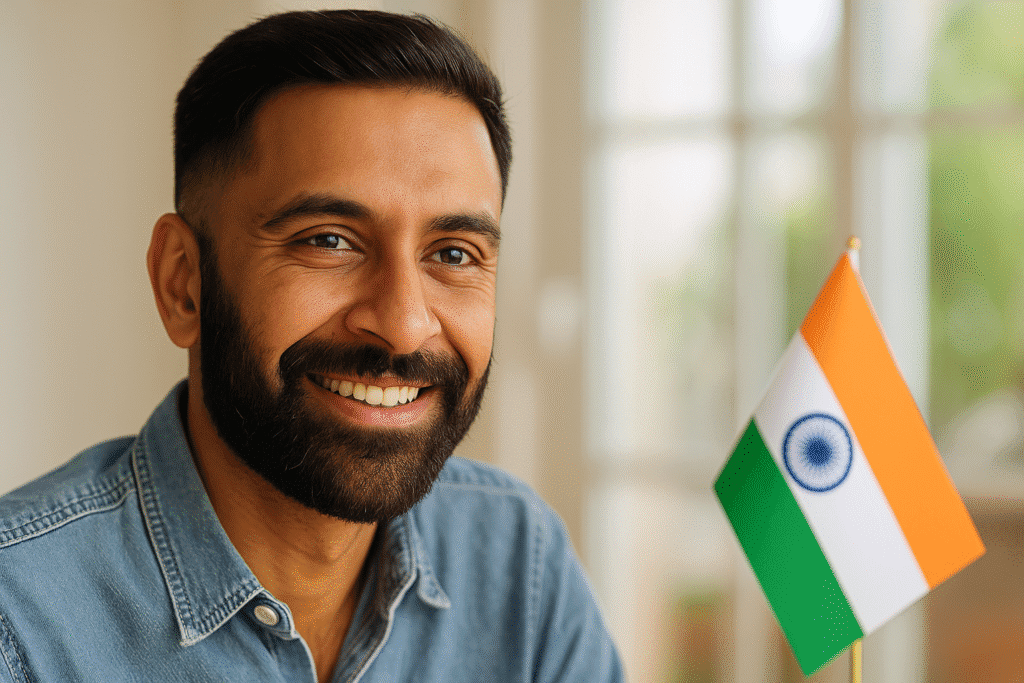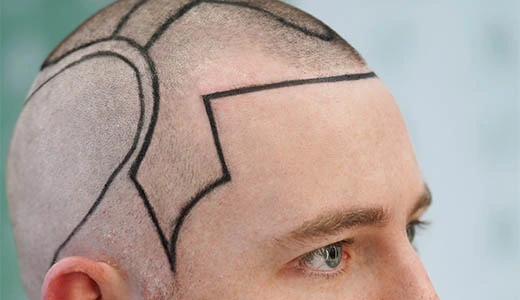Hair Transplant in Nepal: Hair loss is a deeply personal issue that affects men and women across the globe. For many, it impacts not only appearance but also self-confidence and emotional well-being. In Nepal, hair loss has become increasingly common due to genetics, lifestyle changes, stress, pollution, and diet. As a result, the demand for hair transplant procedures in Nepal has grown dramatically over the past decade.

Until recently, Nepali patients who wanted world-class hair restoration had to travel abroad often to India, Turkey, or Thailand. However, advancements in medical technology, the training of local surgeons, and the growing popularity of cosmetic procedures in Kathmandu, Pokhara, and other major cities have made hair transplant in Nepal a more viable option.
In this comprehensive guide, we will explore everything about hair transplants in Nepal, including:
- The state of hair transplant clinics in Nepal.
- Popular techniques (FUE, FUT, DHI, Sapphire FUE).
- Costs and how they compare to other countries.
- What the patient journey looks like in Nepal.
- Challenges and limitations of the Nepali hair transplant industry.
- Alternatives such as Turkey (especially Antalya), India, and Thailand.
- Patient experiences and recovery expectations.
By the end of this article, you’ll have a full 360-degree understanding of whether Nepal is the right place for your hair restoration procedure.
Hair Loss in Nepal: Causes and Cultural Context
In Nepal, men typically start experiencing androgenetic alopecia (male pattern baldness) in their 20s and 30s, while women may face thinning hair due to hormonal changes, stress, or nutritional deficiencies.
Main causes of hair loss in Nepal include:
- Genetics – Inherited baldness remains the most common cause.
- Stress and Pollution – Kathmandu’s air pollution is among the highest in South Asia, contributing to poor scalp health.
- Dietary Deficiencies – Lack of iron, zinc, vitamin D, and protein.
- Lifestyle – Smoking, alcohol, and lack of sleep contribute significantly.
- Medical Conditions – Thyroid disorders, alopecia areata, and hormonal imbalances.
Hair loss is culturally significant in Nepal. In many communities, full hair symbolizes youth, vitality, and even prosperity. This is why both men and women are increasingly willing to invest in modern cosmetic treatments like hair transplants.
Hair Transplant in Nepal: The State of the Industry
Hair transplant is still relatively new in Nepal compared to countries like India or Turkey, but it has grown quickly in the last decade. Kathmandu is now home to several clinics offering modern procedures, often led by dermatologists or cosmetic surgeons trained abroad.
Common techniques available in Nepal:
- FUE (Follicular Unit Extraction) – The most popular method, where individual follicles are extracted and transplanted.
- FUT (Follicular Unit Transplantation/Strip Method) – Less common now but still available in some clinics.
- DHI (Direct Hair Implantation) – Available in select advanced clinics.
- PRP Therapy – Platelet-Rich Plasma therapy often combined with FUE for improved healing and graft survival.
Key Locations in Nepal for Hair Transplants:
- Kathmandu – The capital and medical hub, with the largest concentration of clinics.
- Pokhara – Popular with medical tourists combining treatment with leisure.
- Lalitpur – Growing number of dermatology and cosmetic centers.
Cost of Hair Transplant in Nepal
Cost is often the main reason patients consider Nepal for surgery. Compared to Western countries, Nepal is far more affordable.
Average costs:
- FUE in Nepal: NPR 80 – NPR 120 per graft (~USD 0.60 – 0.90).
- FUT in Nepal: NPR 60 – NPR 80 per graft (~USD 0.45 – 0.65).
- DHI in Nepal: NPR 120 – NPR 150 per graft (~USD 0.90 – 1.20).
For a 3,000-graft transplant, patients can expect to pay:
- FUE: NPR 240,000 – 360,000 (~USD 1,800 – 2,700).
- FUT: NPR 180,000 – 240,000 (~USD 1,350 – 1,800).
- DHI: NPR 360,000 – 450,000 (~USD 2,700 – 3,400).
International comparison:
- Nepal: USD 1,800 – 3,400
- India: USD 1,500 – 2,800
- Turkey (Antalya/Istanbul): USD 2,000 – 4,500 (all-inclusive with hotel + transfers)
- Thailand: USD 3,000 – 5,000
- Australia: USD 12,000 – 18,000
This shows Nepal is affordable for locals, but for international patients, Turkey often offers more value with inclusive packages and luxury experiences.
Techniques Explained: What’s Available in Nepal
1. FUE (Follicular Unit Extraction) in Nepal
The most requested technique. Follicles are removed individually and implanted in bald areas.
- Pros: Natural results, minimal scarring, fast healing.
- Cons: Requires high skill, can be time-consuming.
2. FUT (Follicular Unit Transplantation) in Nepal
A strip of scalp is removed and dissected into grafts.
- Pros: Cheaper, high graft yield in one session.
- Cons: Linear scar, longer healing.
3. DHI (Direct Hair Implantation) in Nepal
Advanced technique using Choi implanter pens.
- Pros: Higher density, no need to shave entire head.
- Cons: Expensive, fewer clinics offer it.
4. Sapphire FUE (Limited Availability in Nepal)
Uses sapphire blades for finer incisions. More common abroad, especially in Turkey.
5. PRP & Stem Cell Therapies
Supportive treatments available in Kathmandu, though less advanced compared to clinics in Turkey or India.
Patient Journey: Hair Transplant in Nepal
Step 1: Consultation
Patients meet with a dermatologist or surgeon, either online or in-person. Scalp analysis and graft estimates are provided.
Step 2: Pre-Surgery Preparation
- Blood tests for medical clearance.
- Advice on avoiding alcohol, smoking, and certain medications.
Step 3: Surgery Day
- Local anesthesia is applied.
- Hair follicles are extracted (FUE/FUT/DHI).
- Grafts are transplanted into recipient areas.
- Procedure takes 5–8 hours.
Step 4: Recovery in Nepal
- First wash is usually done at the clinic after 48 hours.
- Redness and swelling subside within 1 week.
- Scabs fall off within 10–12 days.
- Growth starts from month 3, with full results in 12–15 months.
Benefits of Choosing Nepal for Hair Transplant
- Affordability for Locals – Cheaper than traveling abroad.
- Proximity for Regional Patients – Convenient for patients from Bhutan, Bangladesh, or northern India.
- Growing Expertise – Surgeons trained abroad are bringing modern methods to Nepal.
- Personalized Service – Clinics often treat fewer patients per day compared to large international “hair mills.”
Challenges and Limitations in Nepal
While Nepal has growing capabilities, there are some drawbacks:
- Limited International Recognition – Few clinics have global accreditations.
- Technology Gap – Not all clinics offer advanced techniques like Sapphire FUE or stem cell therapy.
- Experience Levels – Surgeons may not have performed as many procedures as Turkish or Indian counterparts.
- Aftercare Infrastructure – Less structured compared to Turkey, where aftercare is a strong focus.
Alternatives for Nepali Patients: Turkey, India, and Thailand
Turkey (Antalya & Istanbul)
- The global leader in hair transplantation.
- Offers luxury all-inclusive packages (hotel, transfers, aftercare).
- Techniques: FUE, DHI, Sapphire FUE, Stem Cell.
- Prices: USD 2,000 – 4,500.
India
- Popular for Nepali patients due to proximity.
- Affordable, with many advanced clinics in Delhi, Mumbai, and Bangalore.
- Prices: USD 1,500 – 2,800.
Thailand
- Strong medical tourism infrastructure.
- More expensive than Nepal or India, but high international standards.
- Prices: USD 3,000 – 5,000.
Real Patient Stories from Nepal
Case 1: Ramesh, 32, Kathmandu
“After years of hair loss, I decided to get an FUE transplant in Kathmandu. The cost was reasonable (around USD 2,000), and the recovery was smooth. I had some doubts about technology compared to Turkey, but overall, I’m satisfied with the natural results.”
Case 2: Anil, 28, Pokhara
“I wanted DHI, but only a few clinics in Nepal offered it. I eventually traveled to India for more options. If more advanced methods become available in Nepal, I’d prefer to stay local.”
Case 3: Sunita, 36, Lalitpur
“As a woman experiencing hair thinning, I was nervous. The doctor explained everything clearly. The results took a year, but I now feel much more confident.”
Post-Surgery Care in Nepal
Patients in Nepal receive instructions on:
- Gentle washing after 48 hours.
- Avoiding sun exposure for 2 weeks.
- No heavy exercise for 10–14 days.
- PRP follow-ups recommended every 3–6 months.
Hair Transplant Results: What to Expect in Nepal
- Month 1–2: Shock loss phase, transplanted hairs fall out.
- Month 3–4: Early regrowth begins.
- Month 6–8: Noticeable density increase.
- Month 12–15: Final results, with full density and natural look.
Future of Hair Transplants in Nepal
The industry in Nepal is expected to grow as:
- More doctors receive international training.
- Clinics invest in modern equipment.
- Medical tourism expands, especially from neighboring countries.
- Awareness about cosmetic treatments increases.
Conclusion: Is Nepal the Right Choice for Hair Transplants?

Hair transplant in Nepal has come a long way. For local patients, it offers affordability, convenience, and increasingly modern techniques. Clinics in Kathmandu and Pokhara are improving standards and delivering natural results.
However, for international patients or Nepali patients who want the latest technology, extensive experience, and all-inclusive care, destinations like Turkey (especially Antalya) remain superior. Still, as Nepal continues to develop its cosmetic surgery infrastructure, it has the potential to become a strong regional hub in the future.
For now, Nepal is an excellent choice for locals who want to restore their hair without traveling abroad — but for those seeking premium solutions, clinics like Hair Legends in Antalya, Turkey, lead the way globally.
